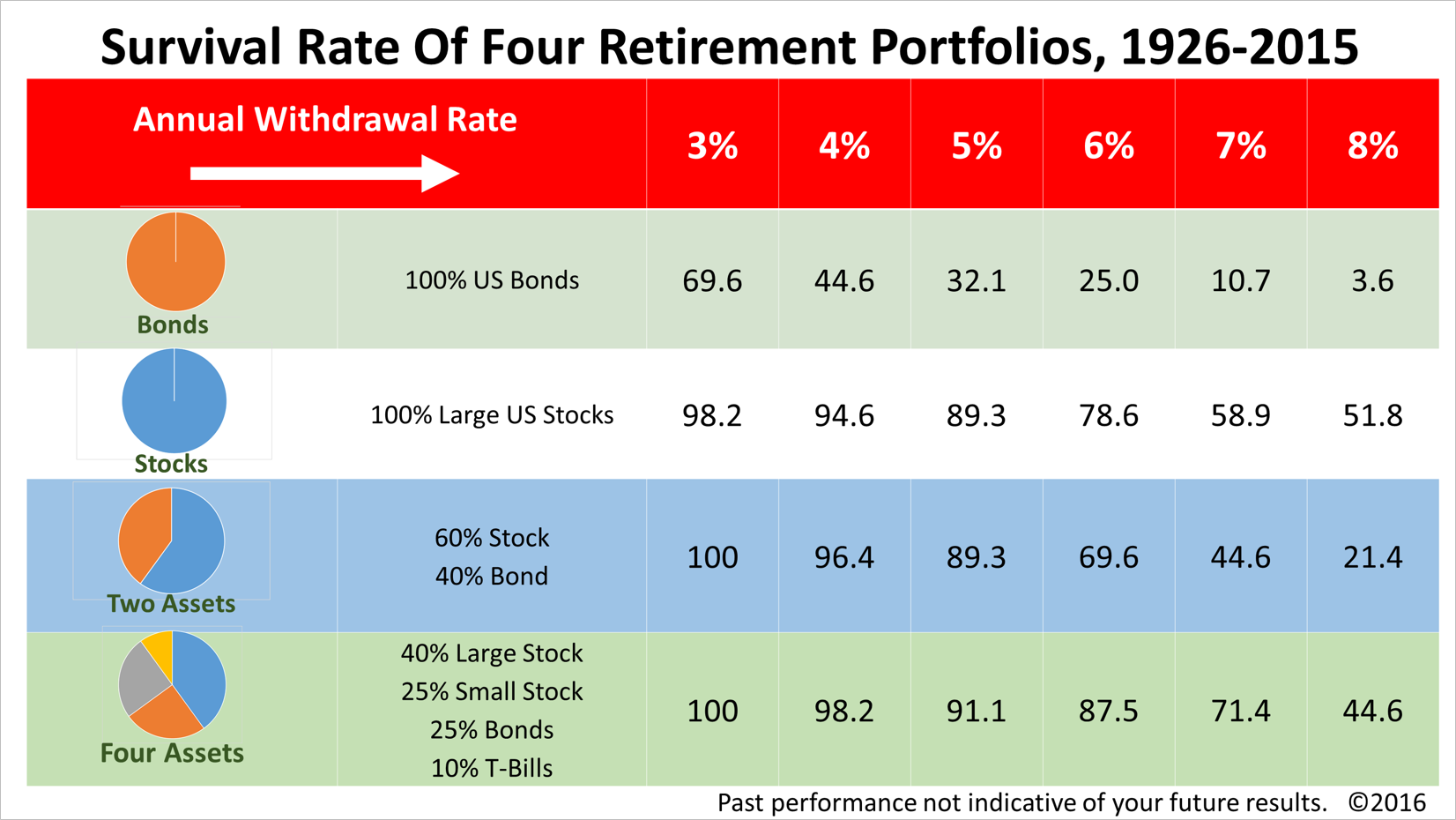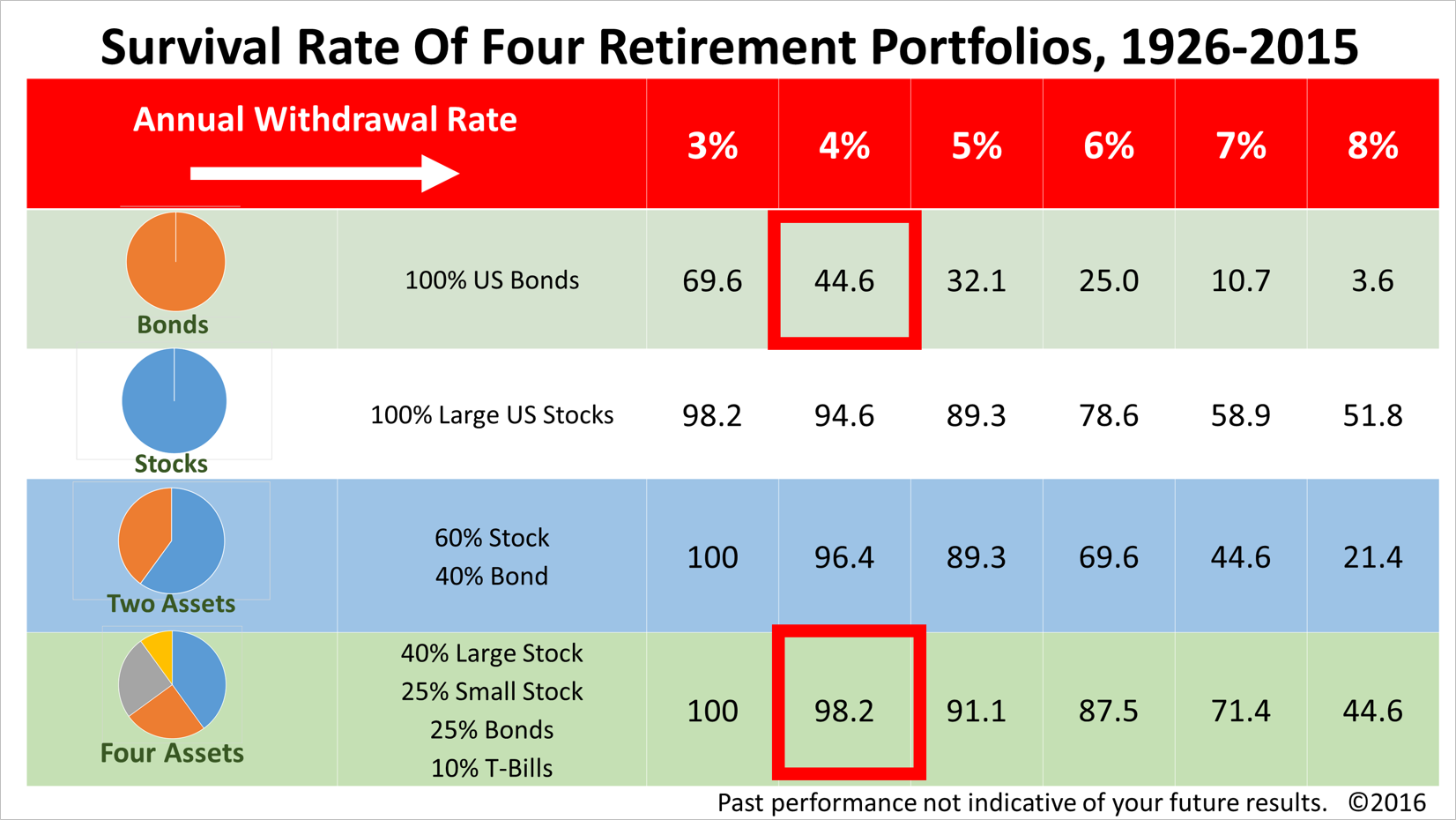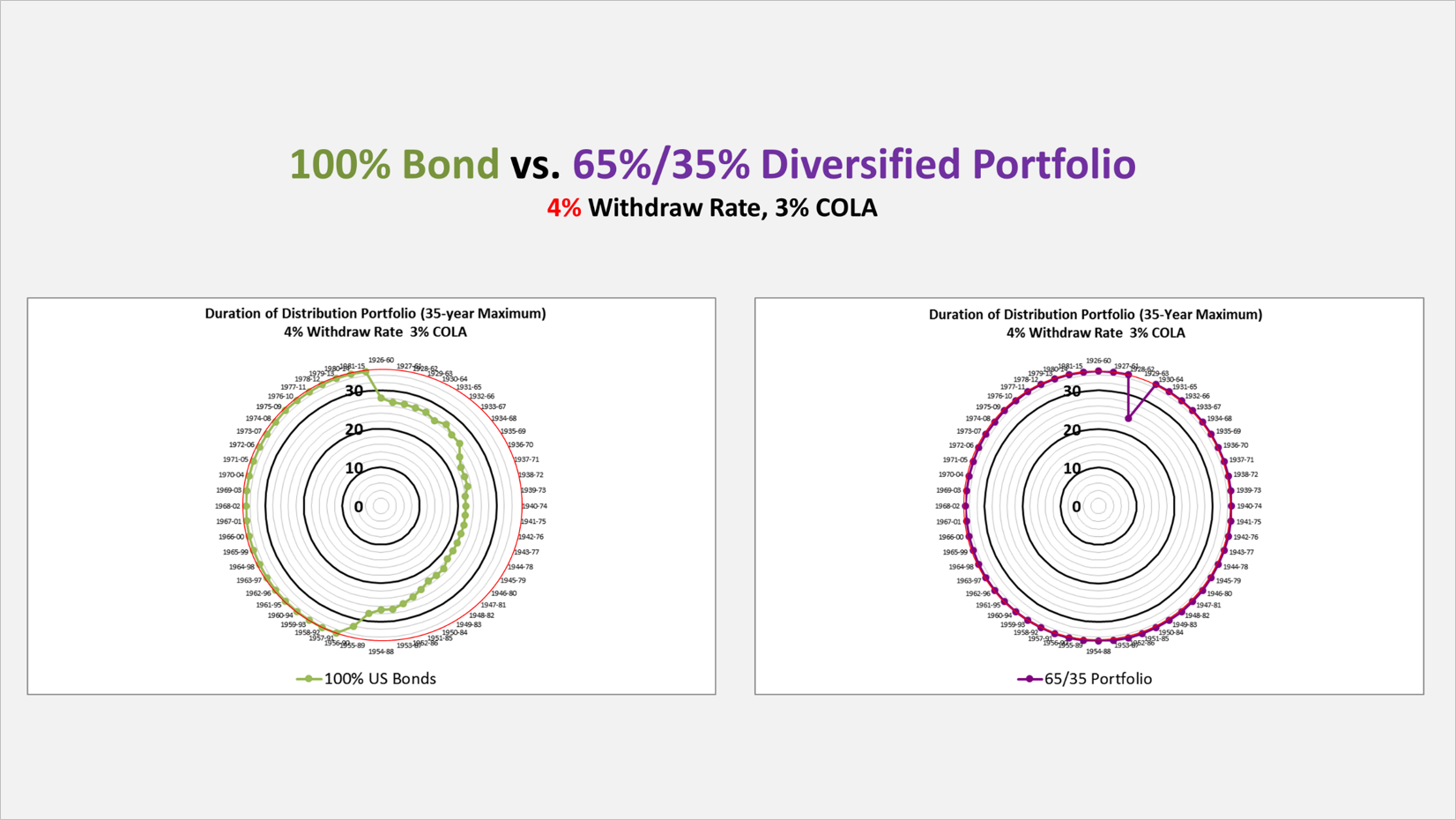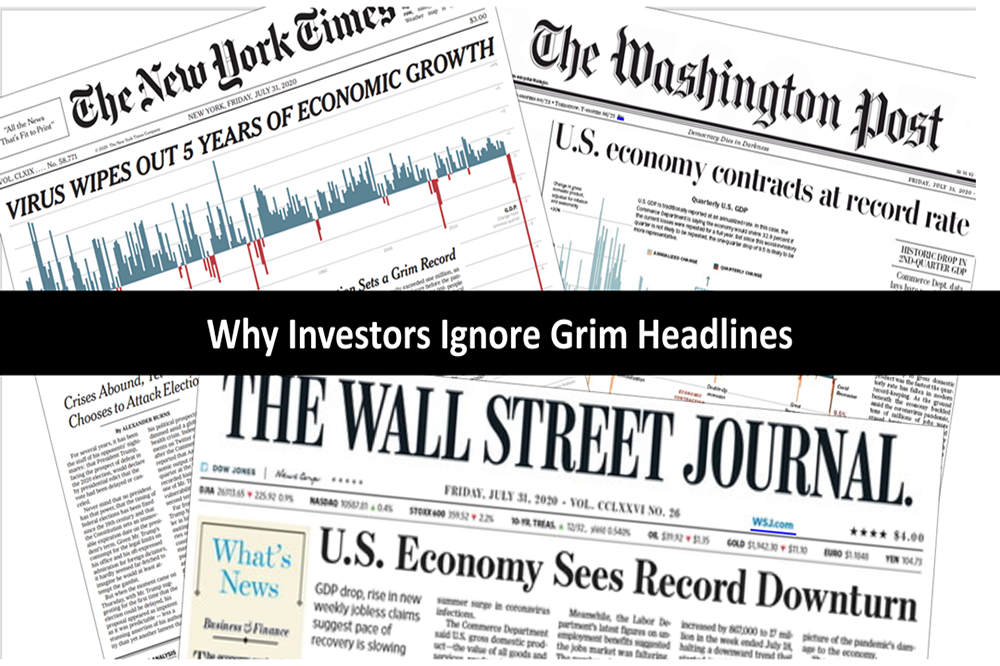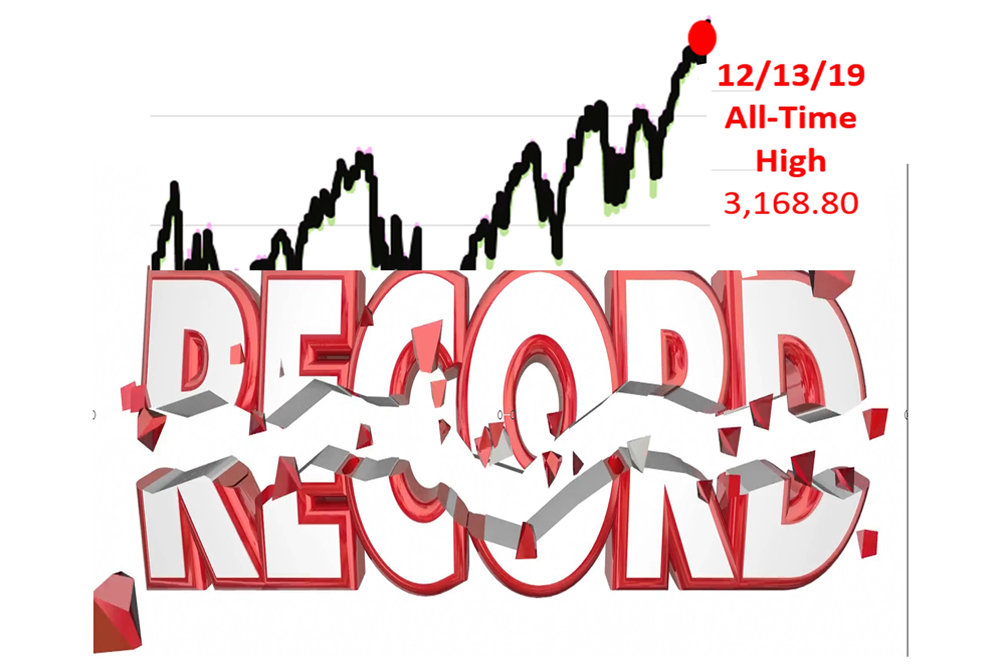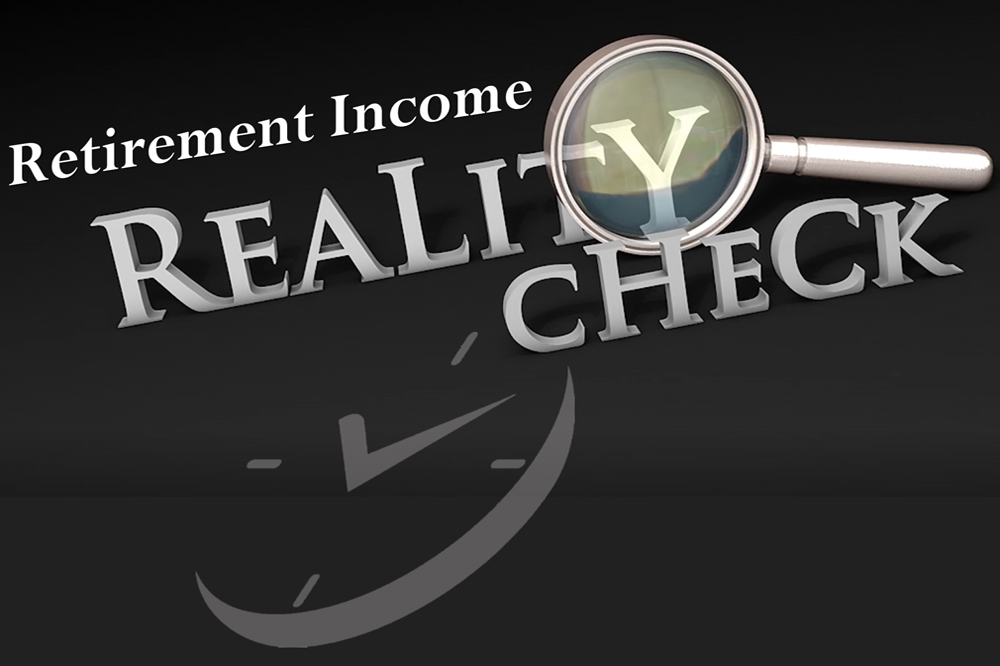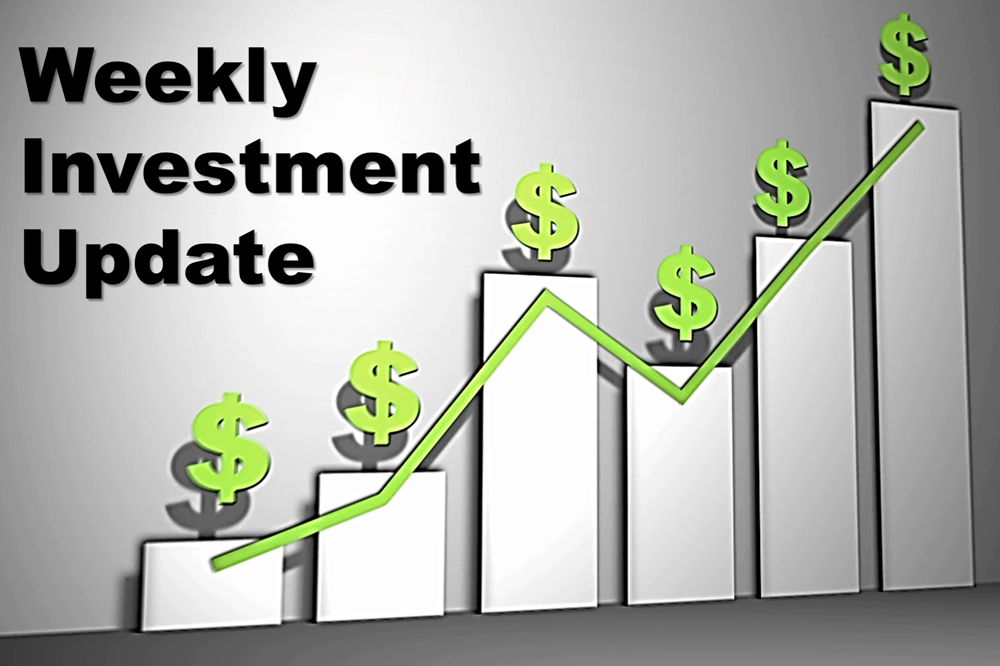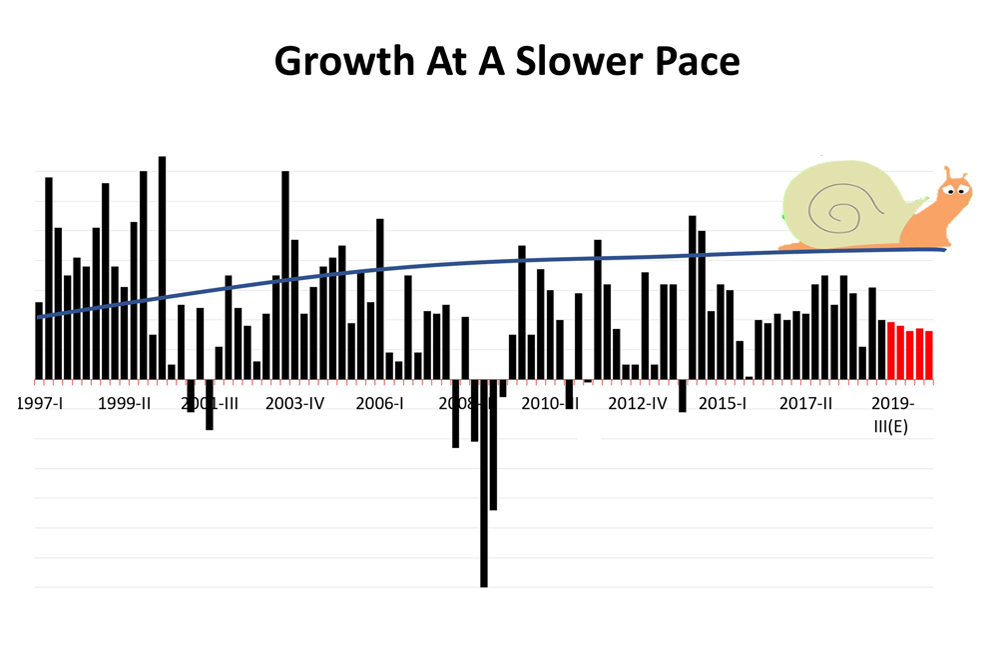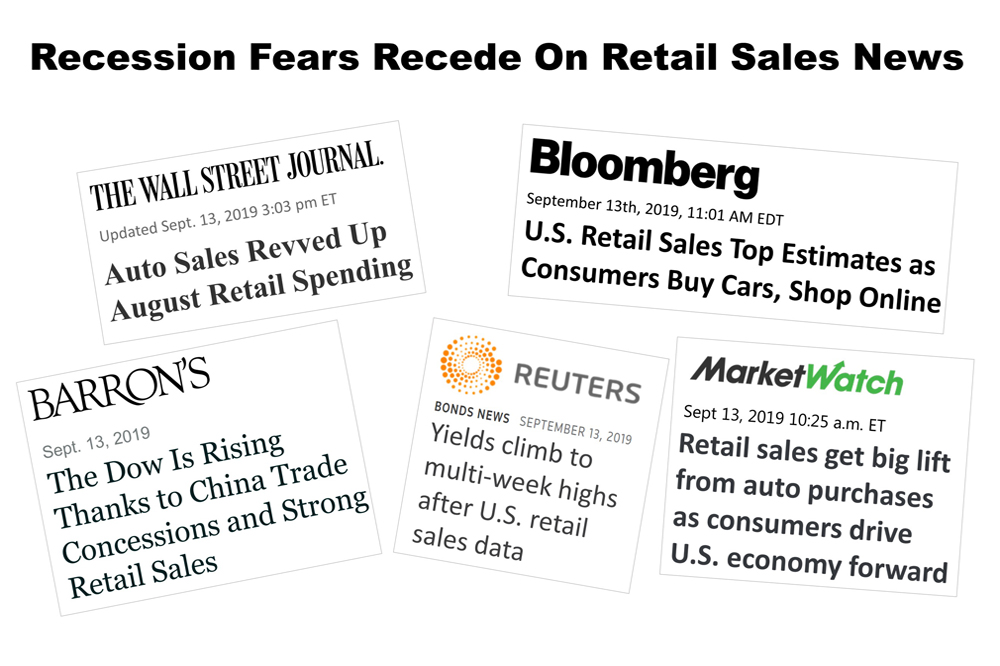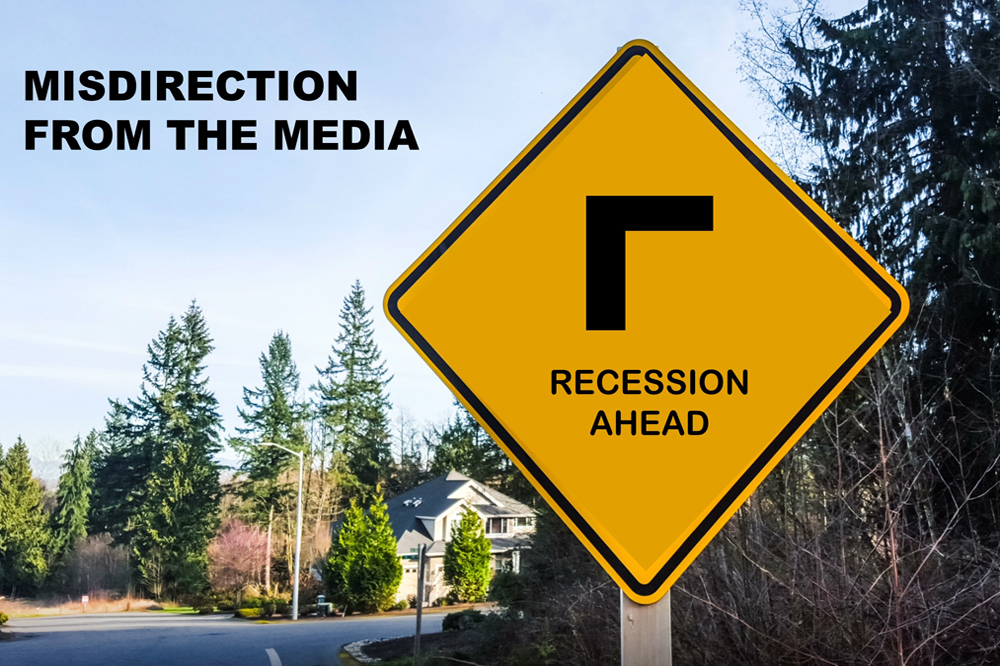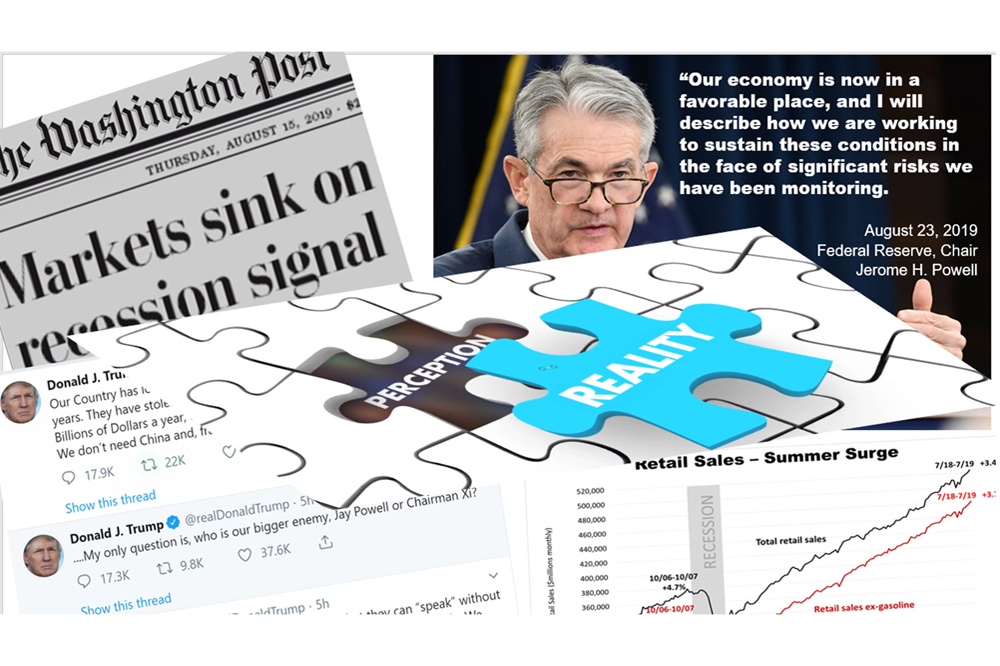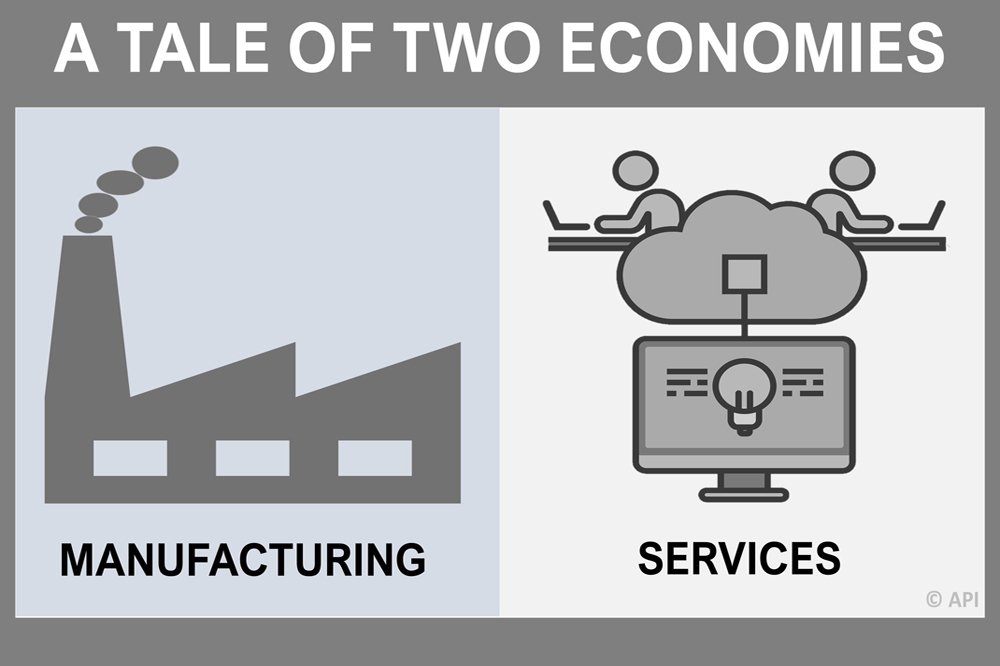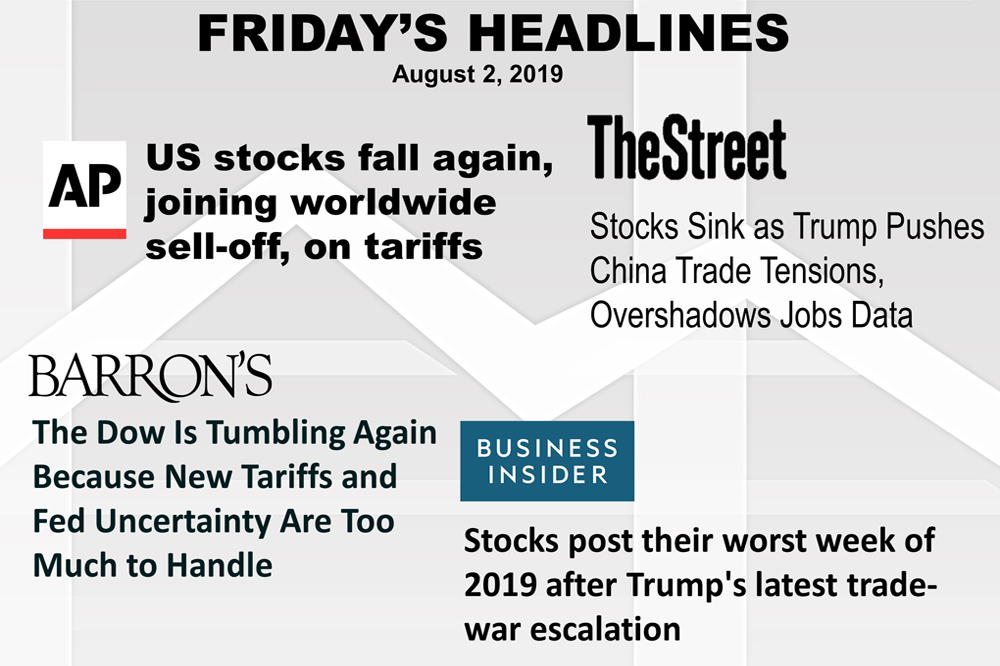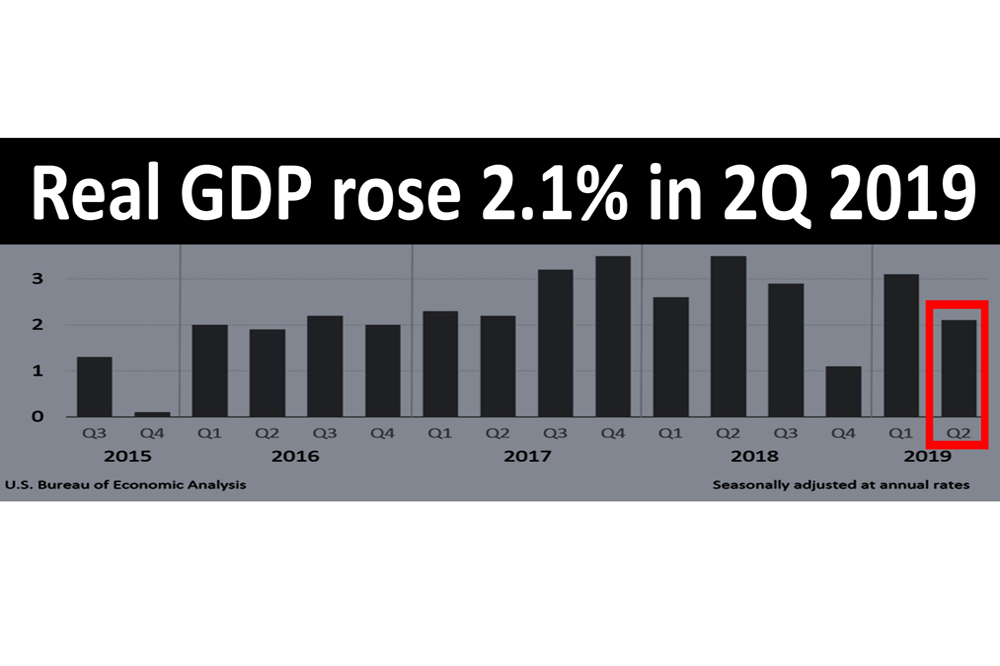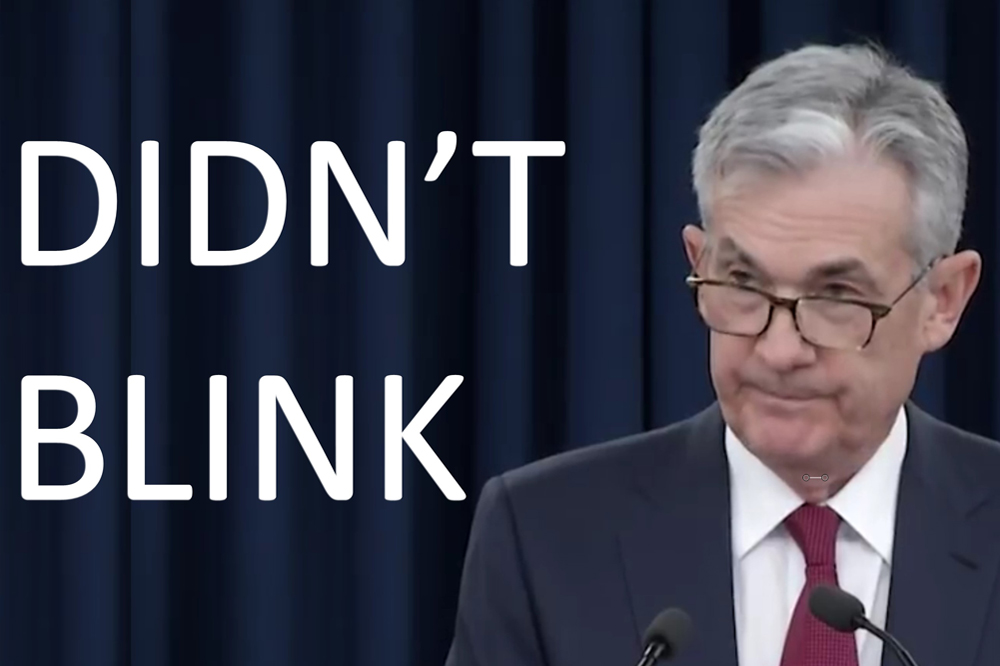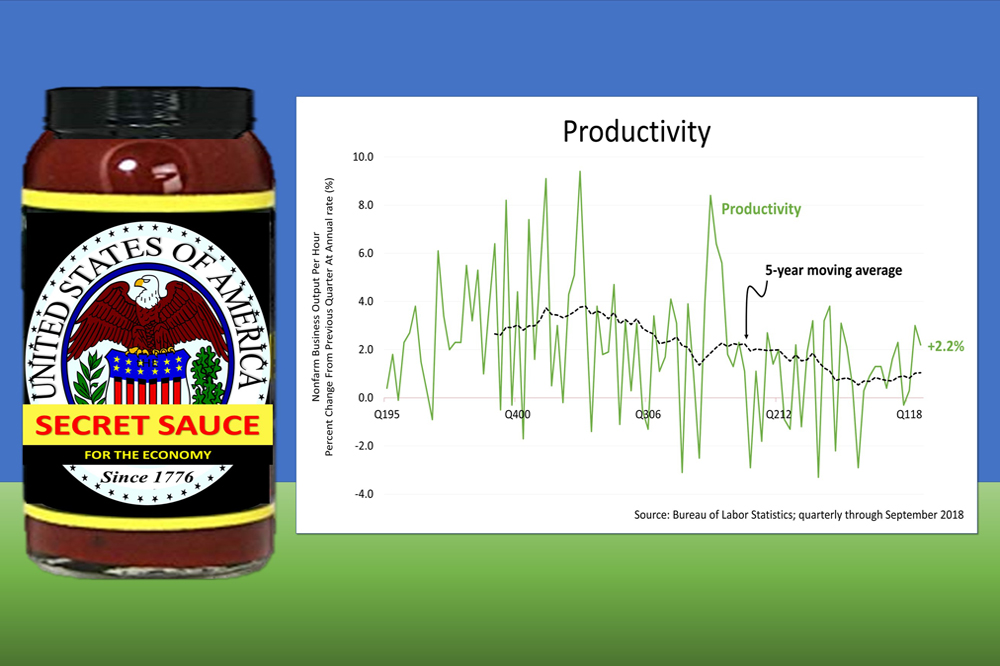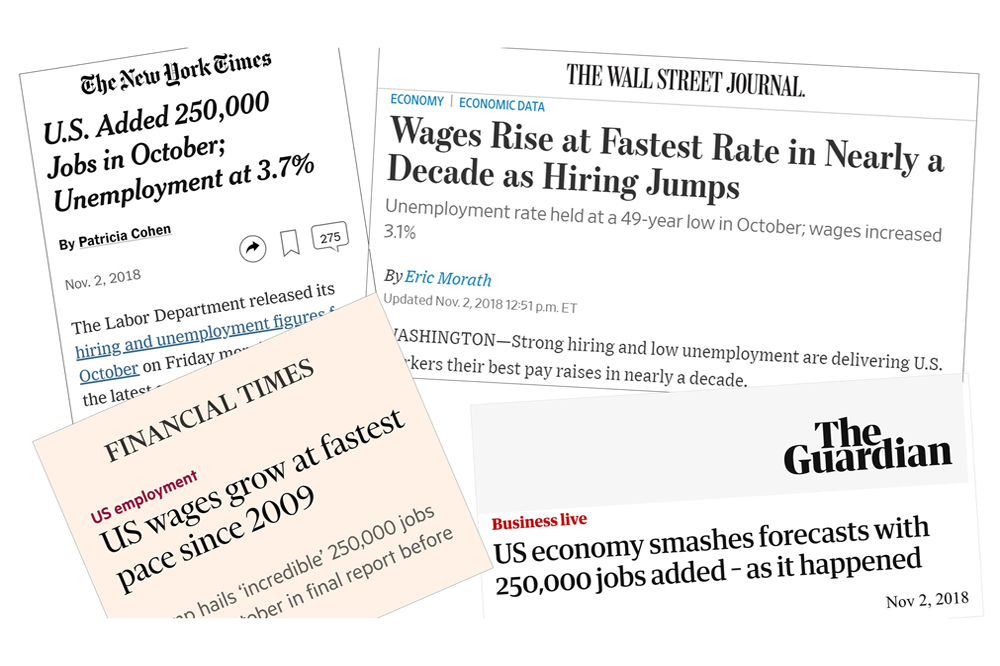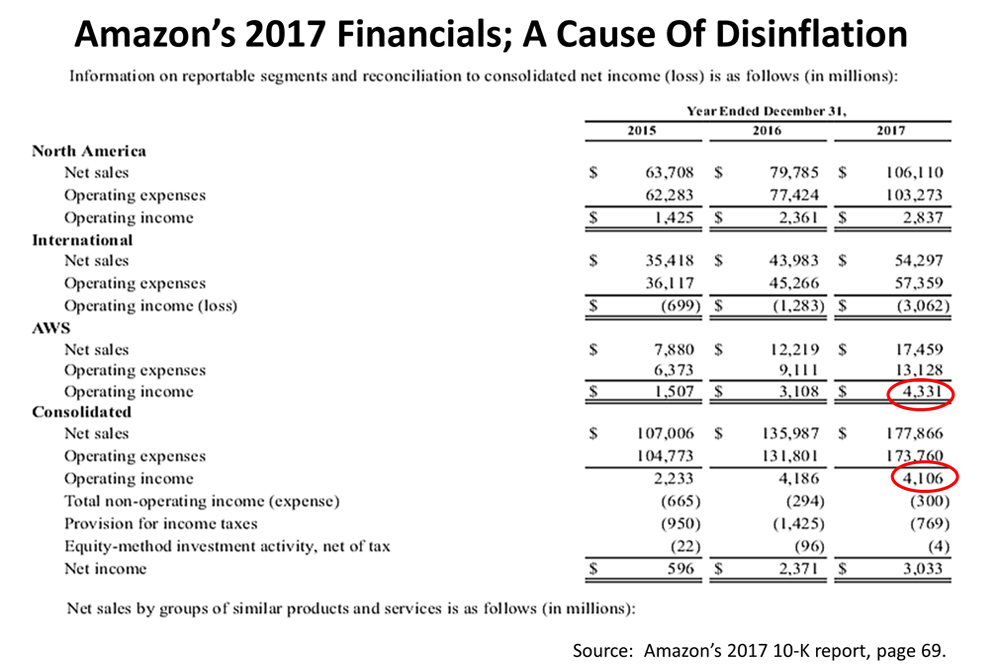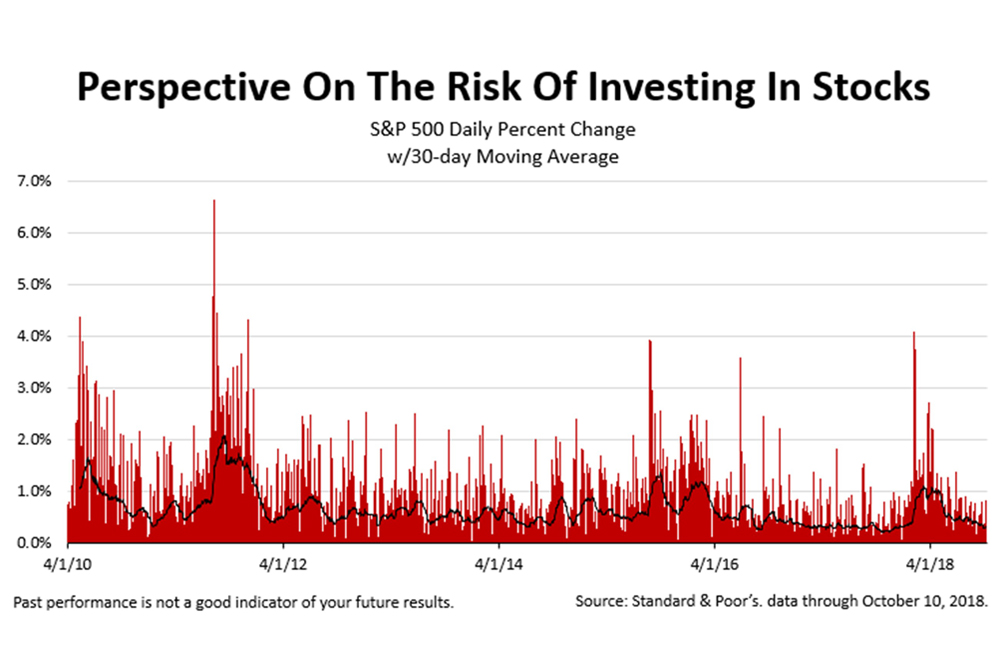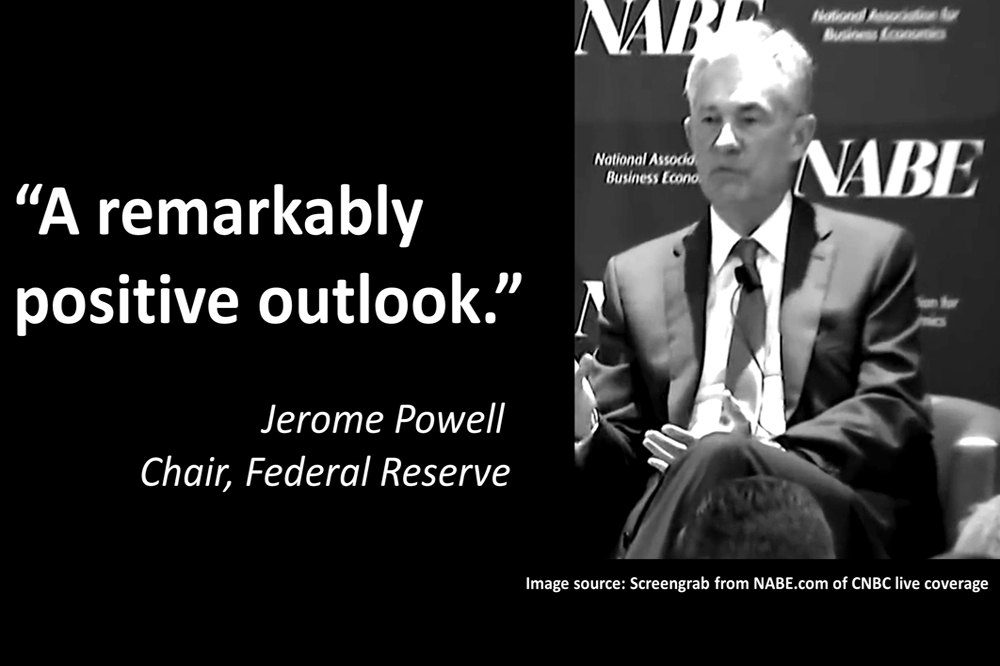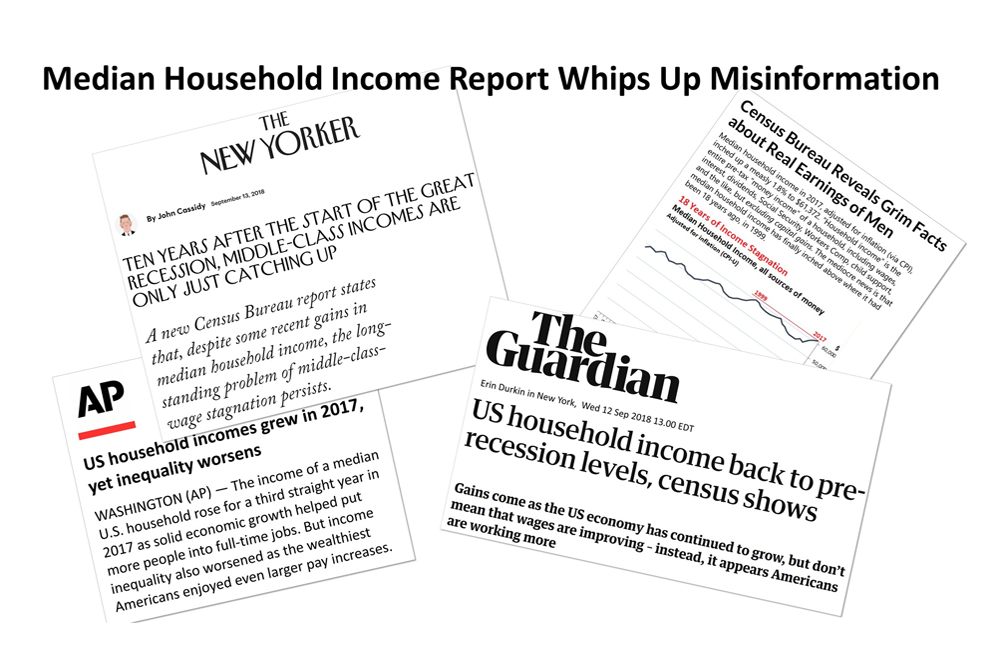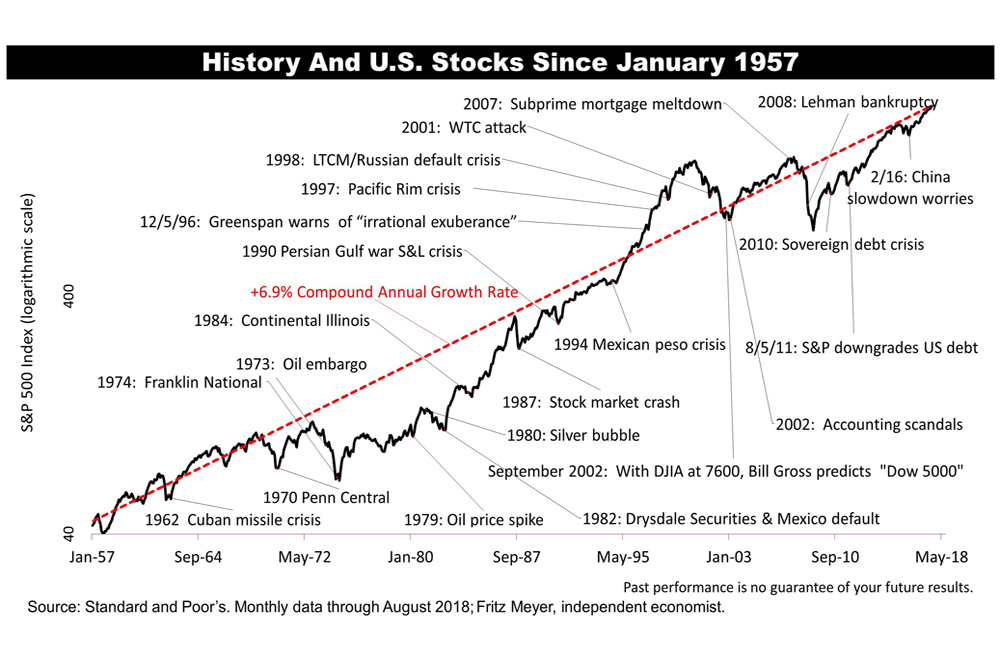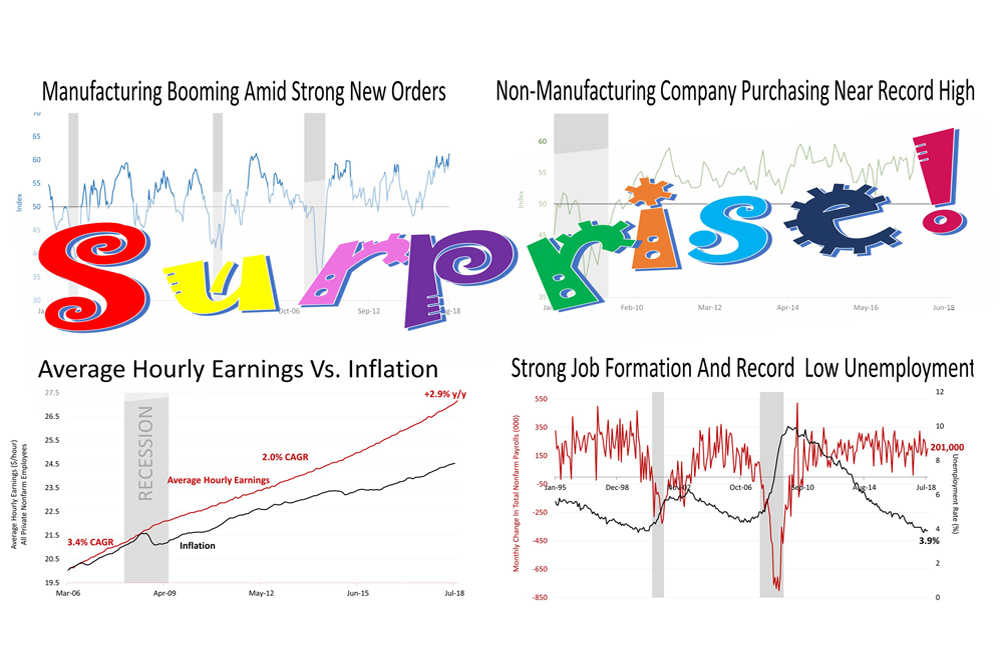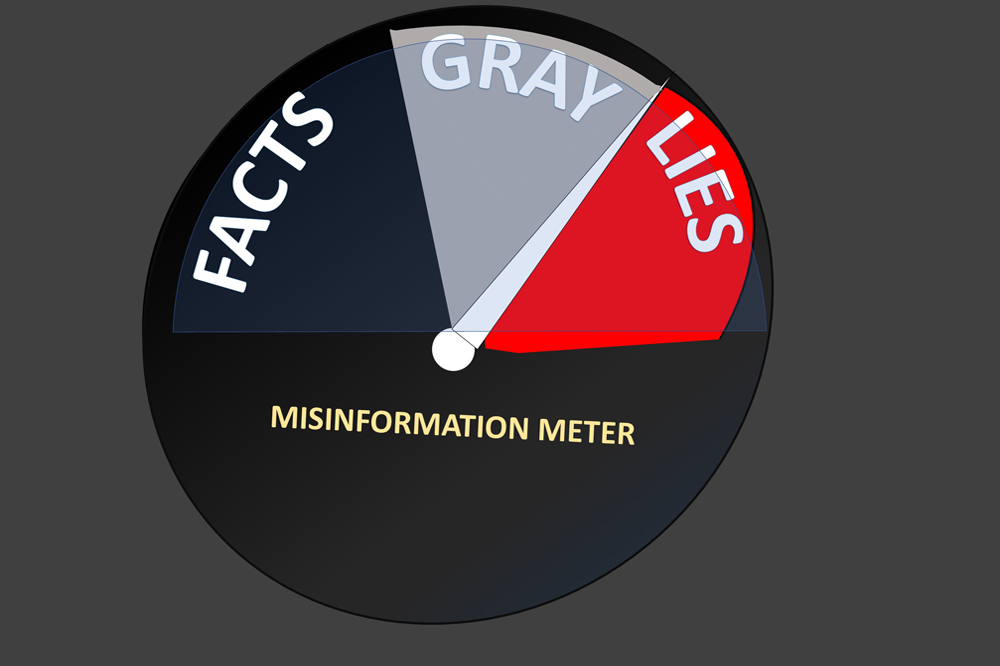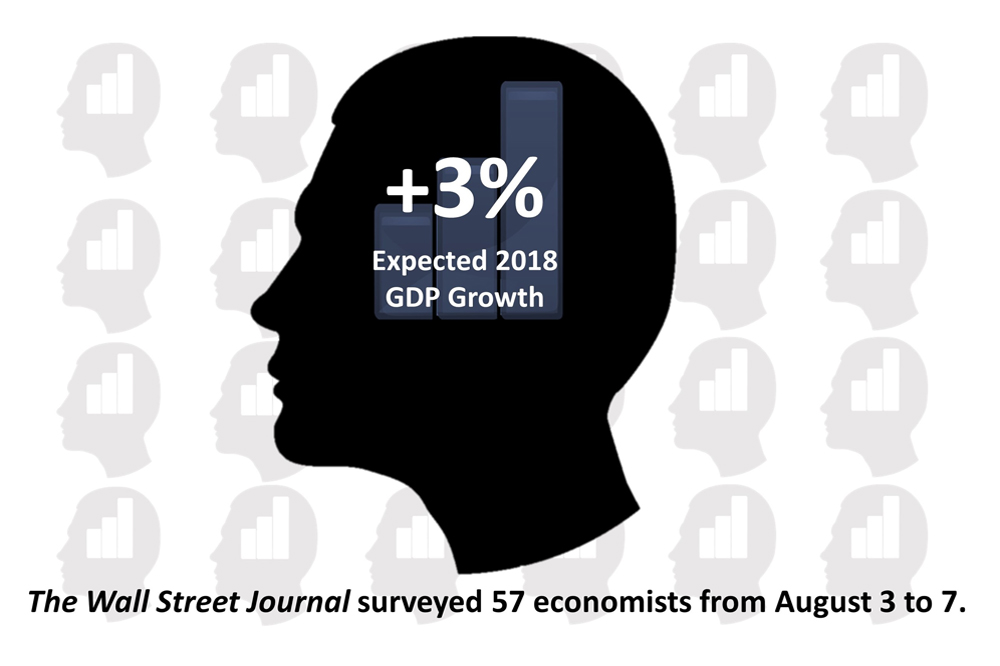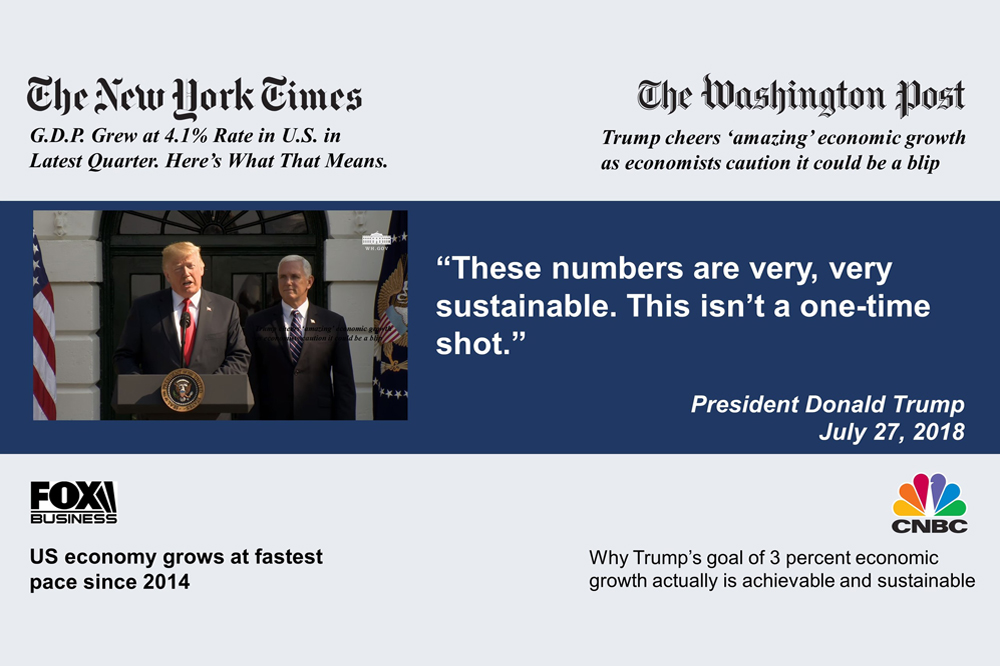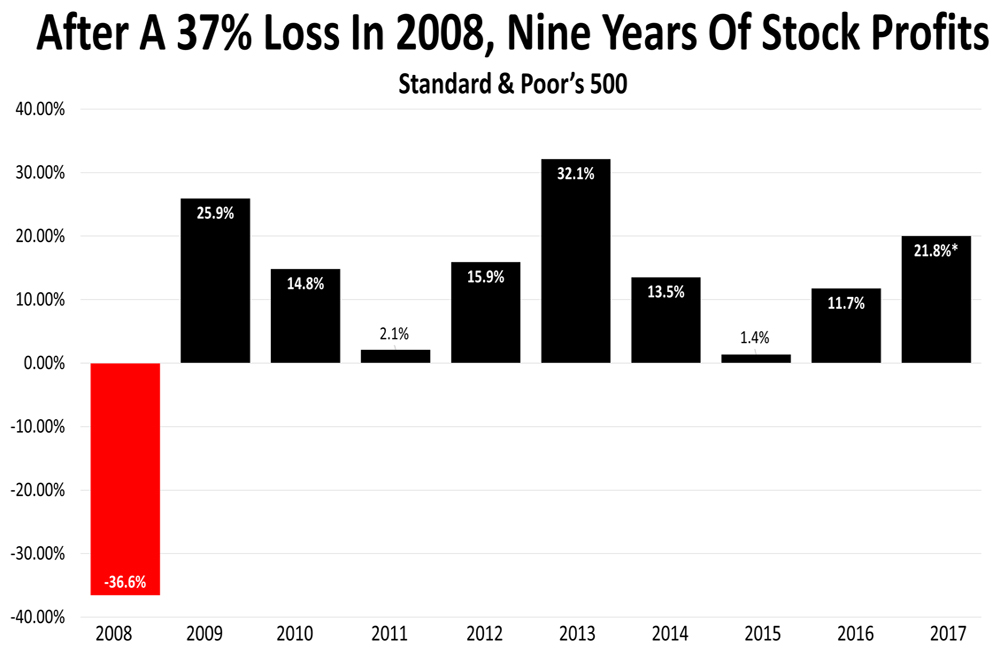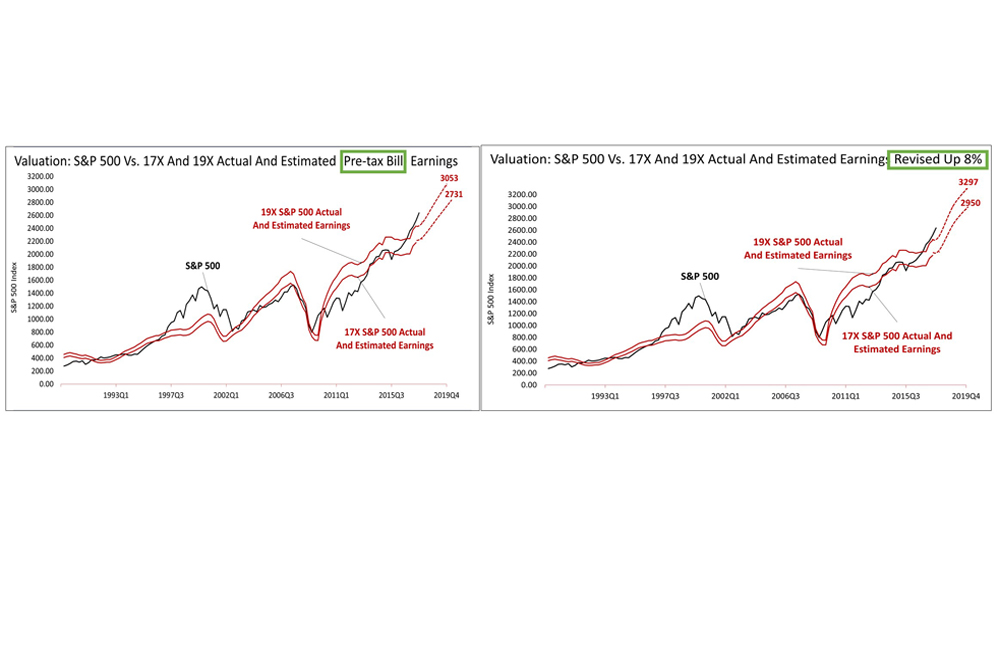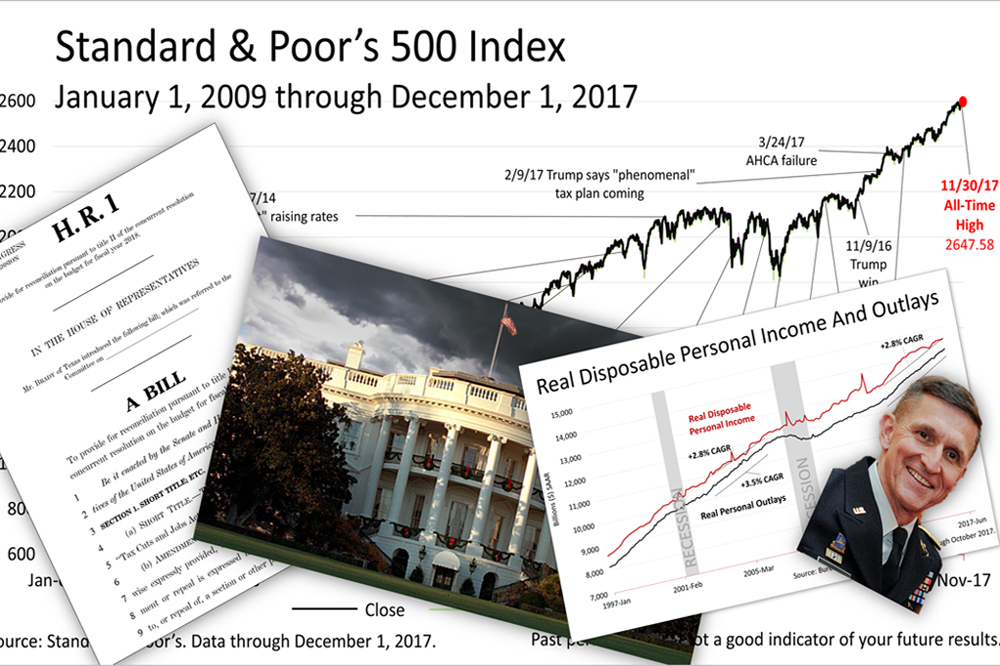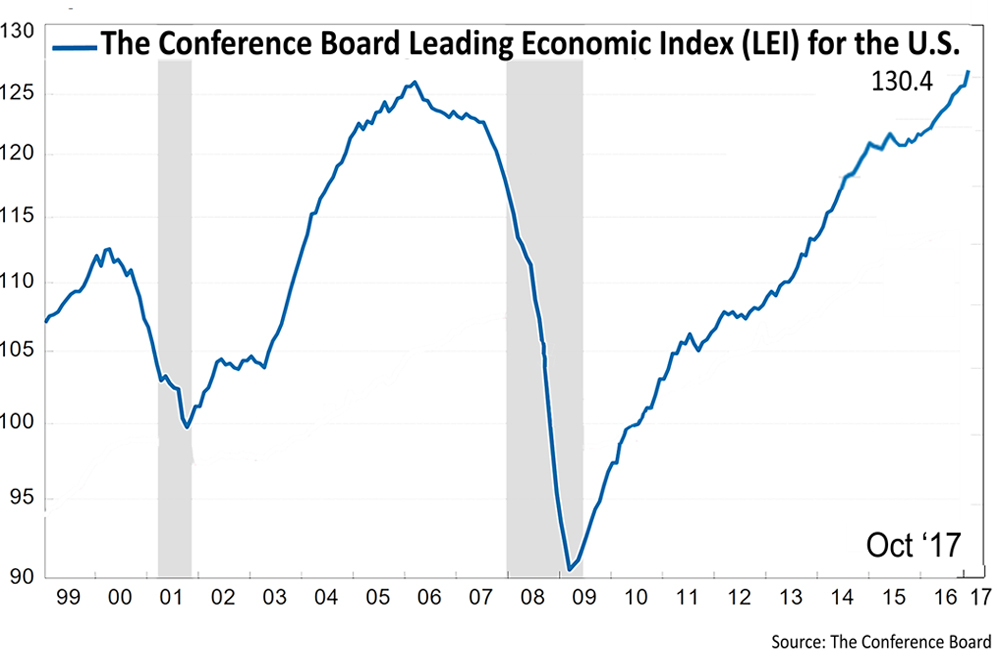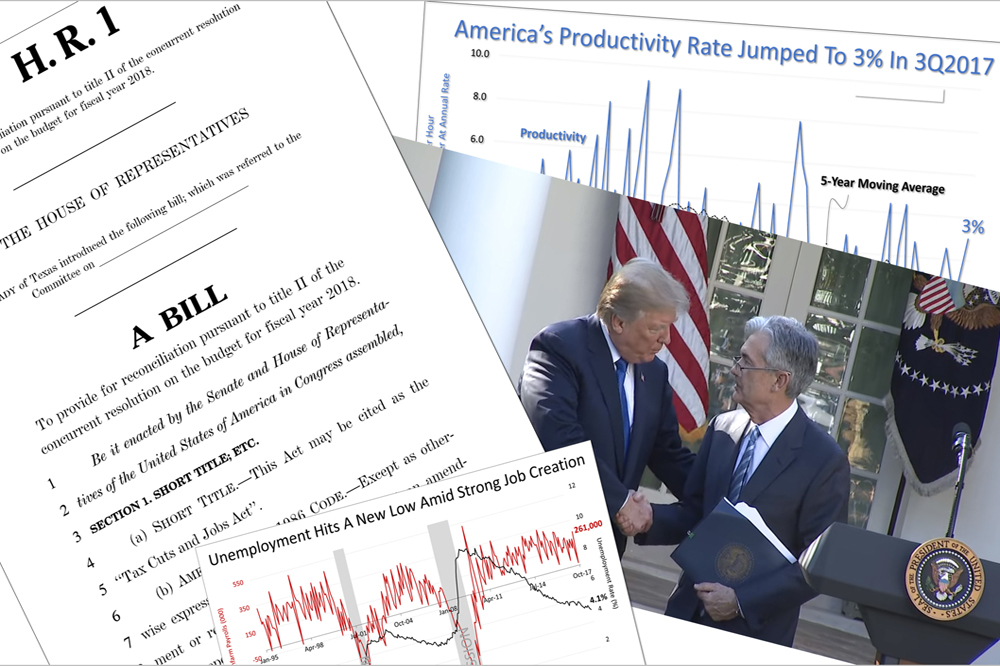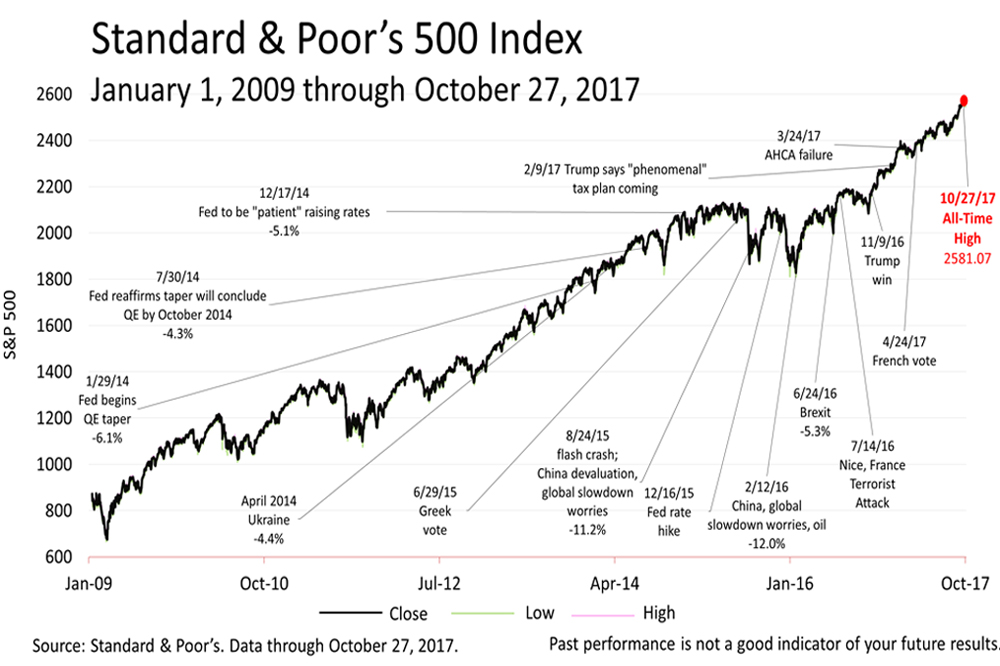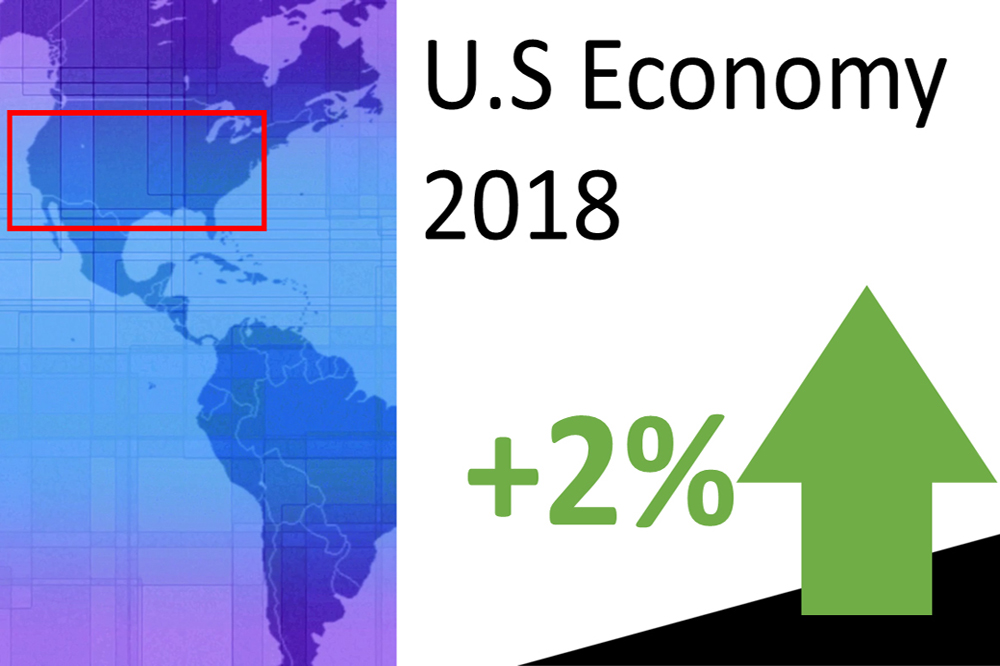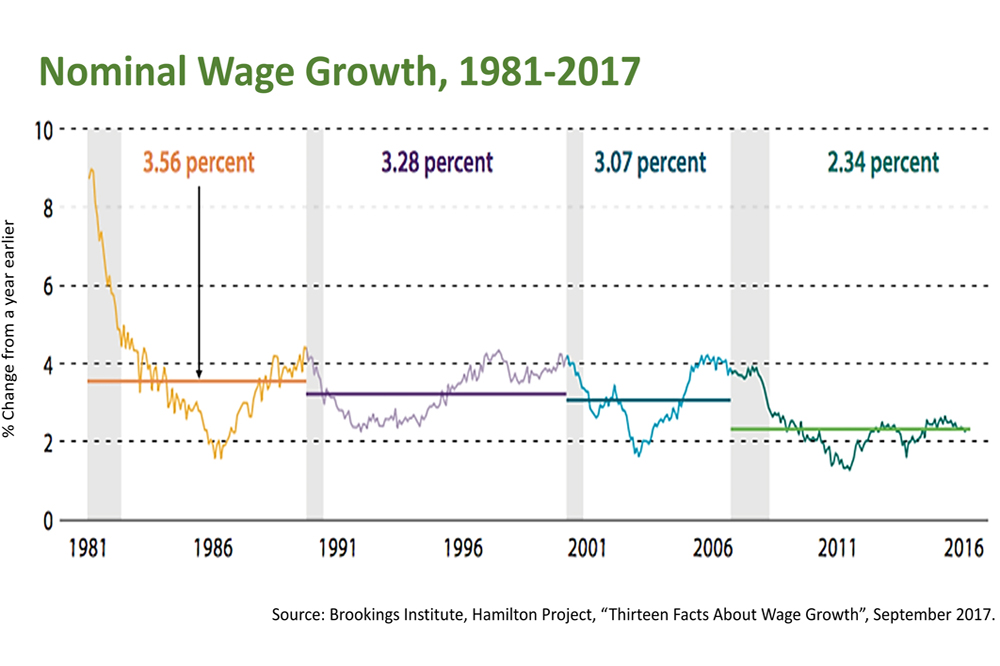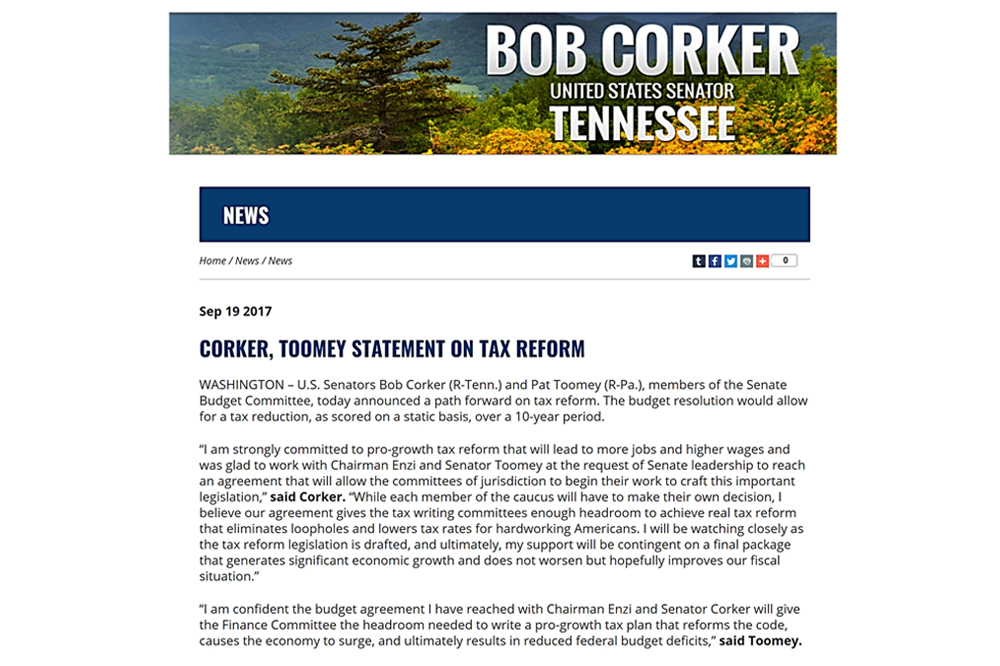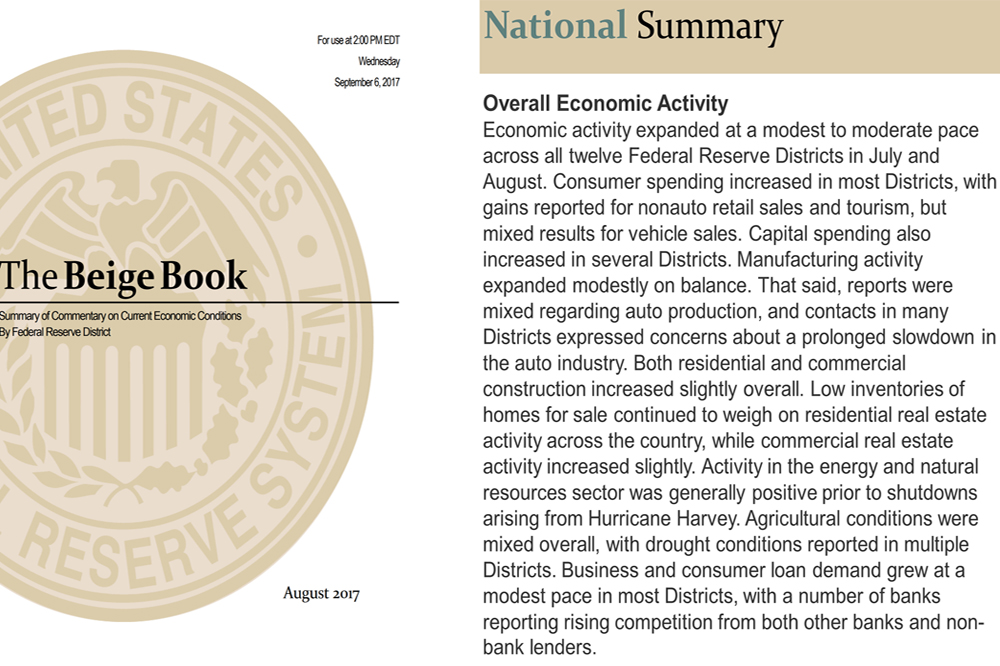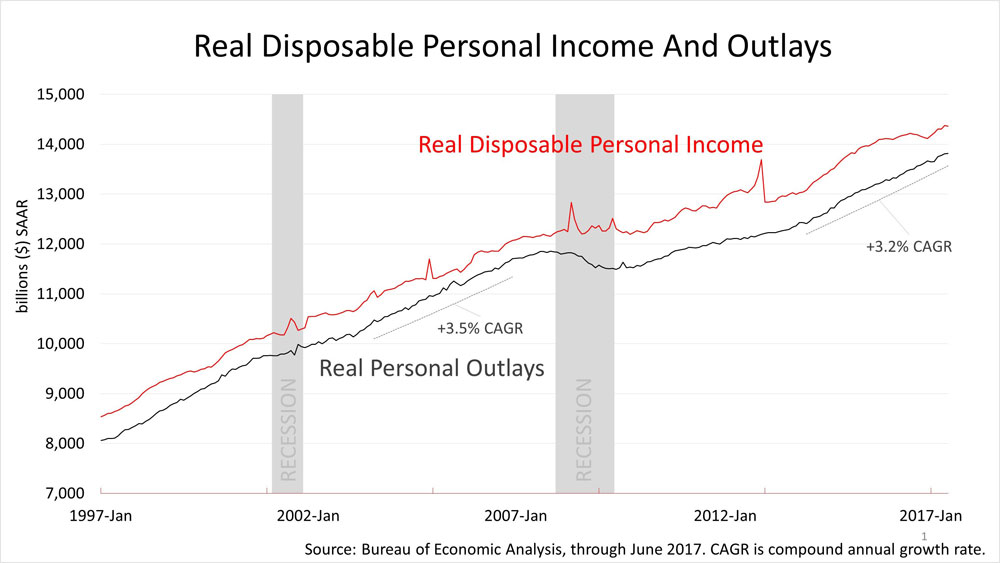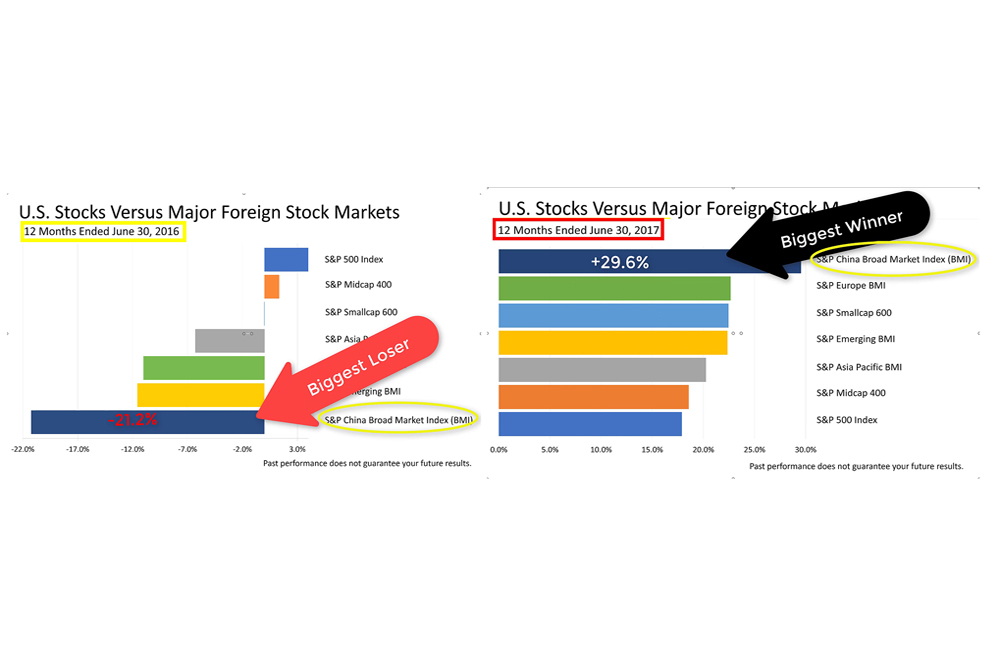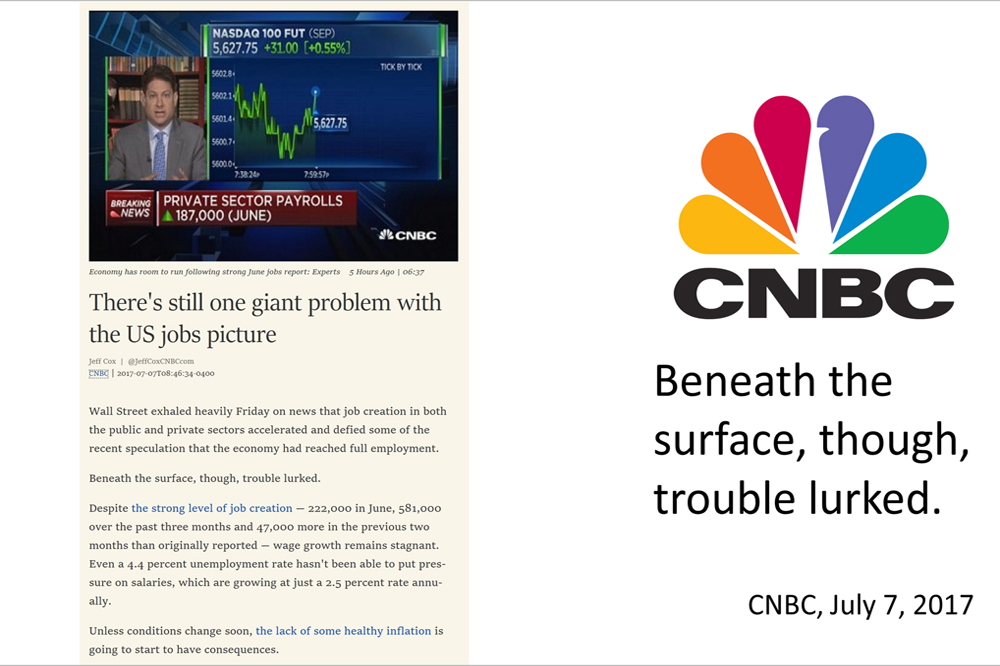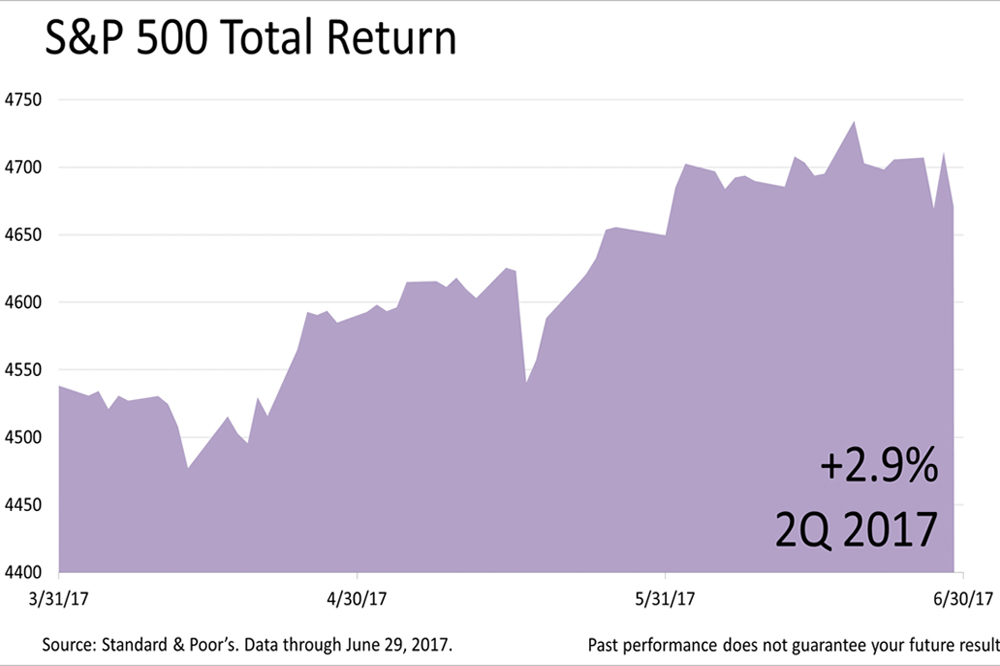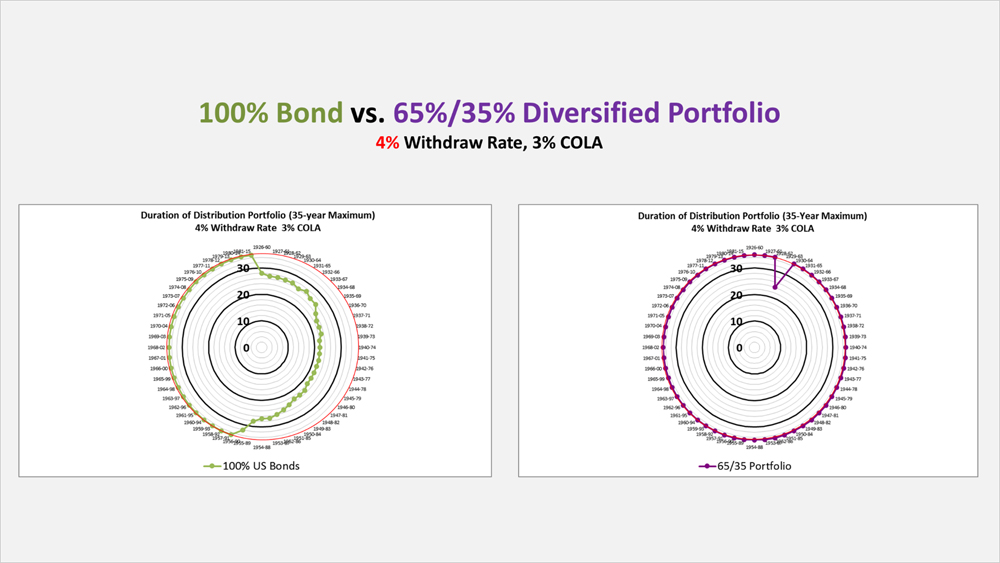Visualizing The Risk Of Running Out Of Money In Retirement
Published Friday, March 25, 2016 at: 7:00 AM EDT
And when you plan your retirement, you can't afford to run out of money.
To visualize the risk of running out of money when you're in your 80s and 90s, we're sharing with you here new research we've licensed from Dr. Craig Israelsen, who teaches in the financial planning program at Utah Valley University.Israelsen back-tested the survival rates of four retirement portfolios based on 90 years of historical data.
In contrast, a four-asset diversified retirement portfolio lasted at least 35 years 98.2% of the time.
To be clear, there were 56 rolling calendar-year 35-year periods between 1926 and 2015. The first 35-year period was from 1926 through 1960, the second was from 1927 to 1961, and so on.
The numbers in the table represent the percentage of time that these four retirement portfolios lasted at least 35 years over the past 90 years – after initial annual withdrawals of 3% to 8%, and 3% cost-of-living adjustments annually to keep up with inflation.
This table is the traditional way to illustrate the survival rates of different portfolios. While the table is very helpful, this is not the only way of visualizing your risk of running out of money in retirement, and it is not the best way.
What this table does NOT show is how long portfolios survived when they didn't last at least 35 years. You have no idea whether a portfolio that failed the 35-year test survived 34, 30, or only 20 years.
That's where this new way of visualizing your retirement portfolio comes in.
These are radar graphs and they offer a unique way to visualize the survival rate of different retirement investment portfolios over rolling time periods.Each dot in green in the all-10-Year U.S. Treasury bond portfolio represents one rolling period in the 35-year lifespan of that portfolio.
Each dot in purple represents one rolling period in the 35-year lifespan of that portfolio, which is 65% in the Standard & Poor's 500 index and 35% in 10-year Treasury bonds. The dots on the outer red ring survived 35 years or longer.
As the dots cave in toward the center, it indicates that during that particular 35-year period, the retirement portfolio lasted less than 35 years. The black circles indicate 30-year, 20-year and less survival periods. Look how many of the all-bond portfolios failed to last 35 years.
Not only are they far from the 35-year survival period but many of the 56 rolling periods lasted less than 25 years. Keep in mind, these two graphs assume an initial withdrawal rate of 4% that is adjusted for inflation by 3% annually.
In contrast, the 65/35 portfolio experienced very little "caving-in" with the same 5% initial withdrawal rate.
Historically, a diversified 65/35 portfolio has been able to survive for at least 35-years far more often than an all-bond retirement portfolio.
But this new data visualization can be helpful in understanding the risk of running out of money in late in life.
If you have any questions or would like to get personal retirement income planning advice, we are here for you any time.
Large cap US stocks represented by Standard & Poor’s 500 Index; small cap US stock represented by Ibbotson Small Stock Index from, 1926-1978 and Russell 2000 Index from 1979-2015; US bonds represented by Ibbotson US Intermediate Government Bond Index from 1926-1975, Barclay’s Capital Aggregate Bond Index from 1976-2015; cash represented by 90-day Treasury Bills from 1926-2015.
This article was written by a veteran financial journalist based on data compiled and analyzed by independent economist, Fritz Meyer. While these are sources we believe to be reliable, the information is not intended to be used as financial advice without consulting a professional about your personal situation. Indices are unmanaged and not available for direct investment. Investments with higher return potential carry greater risk for loss. Past performance is not an indicator of your future results.
2024
-
 Stocks Closed At A Record High
Stocks Closed At A Record High
-
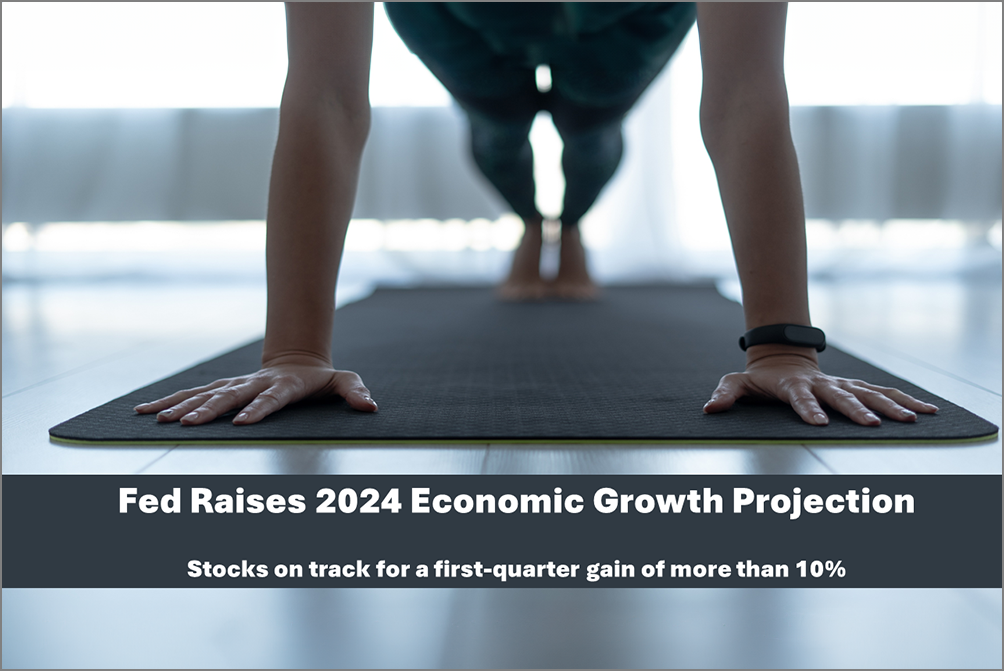 Federal Reserve Projects Strong Growth
Federal Reserve Projects Strong Growth
-
 The Best People Were Wrong
The Best People Were Wrong
-
 This Week’s Investment News In Six Charts
This Week’s Investment News In Six Charts
-
 U.S. Investor Picture Of The Week
U.S. Investor Picture Of The Week
-
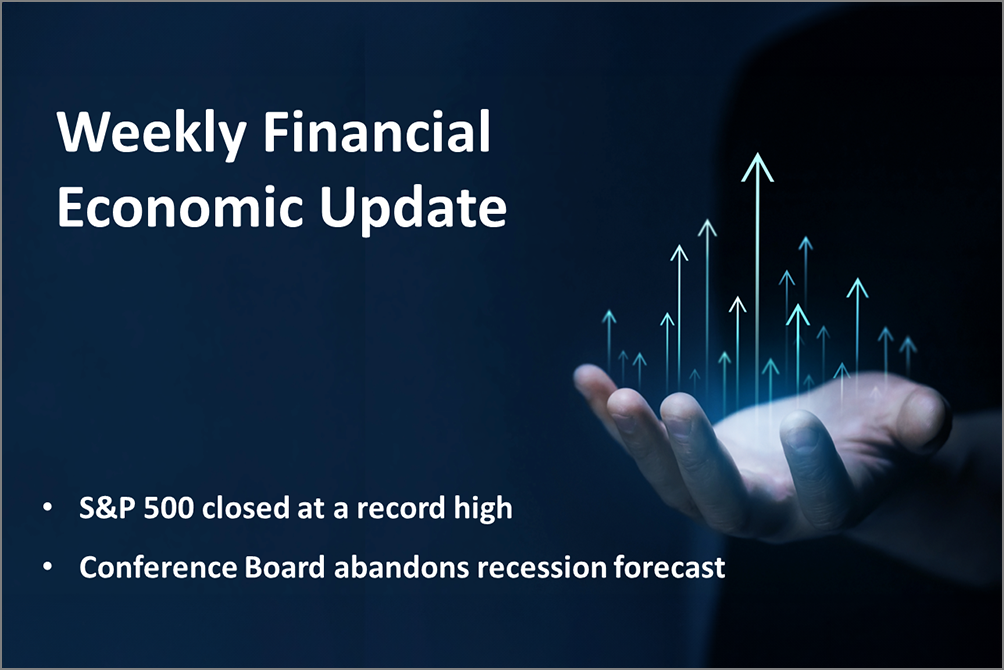 The Conference Board Backs Off Its Recession Forecast
The Conference Board Backs Off Its Recession Forecast
-
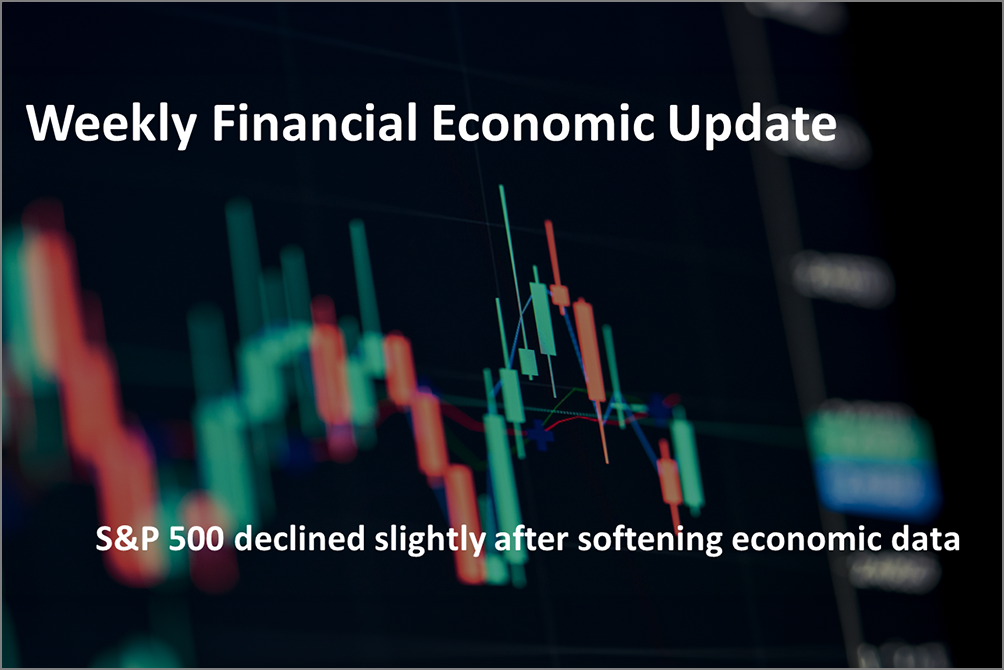 Softening Economic Data, Inflation Fears Dampen Stock Rally
Softening Economic Data, Inflation Fears Dampen Stock Rally
-
 S&P 500 Closes Above 5000 For The First Time Ever
S&P 500 Closes Above 5000 For The First Time Ever
-
 Why America Is The World’s Economic Leader
Why America Is The World’s Economic Leader
-
 Investment News For The Week Ended Friday, January 26
Investment News For The Week Ended Friday, January 26
-
 Why Stocks Broke The All-Time Record High
Why Stocks Broke The All-Time Record High
-
 A Strategic Update, With Stocks Near All-Time High And Crises Unfolding
A Strategic Update, With Stocks Near All-Time High And Crises Unfolding




